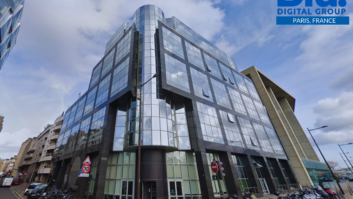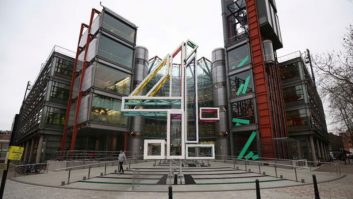In today’s feature world, most digital intermediate (DI) projects are completed in 2k, but requests for 4k are steadily increasing — just ask Hollywood’s EFILM, writes Carolyn Giardina.
In 2004, the company completed two features in 4k-Spiderman 2 and Ocean’s Twelve. In 2005, that number jumped to six 4k titles, including Jarhead, Rent, Casanova, The Family Stone, and Stealth. In 2006, predicts EFILM’s VP of business development Michael Cooper, that number could reach ten.
A 4k production – 4,096 X 3,112 lines of resolution – is four times the picture information in a 2k file. As an example of what is required to accommodate that amount of information, Cooper says the company set aside 40TB of storage for creating the DI on director Sam Mendes’ Jarhead, and he adds that the finished film required nearly 10 TB.
So its not surprising that EFILM’s infrastructure – in addition to a colour grading system based on Colorfront technology (which was more recently sold to Autodesk Media & Entertaiment and today is the heart of Discreet Lustre) and Arri’s Arrilaser film recorders – includes 300 TB of SGI CXFS SAN storage, as well as nearline storage and additional local storage.
There was significant testing involved before Jarhead director of photography Roger Deakins, BSC, ASC made the decision to go the 4k route. He is no stranger to the process; Deakins served as director of photography and supervised the DI on 2000’s Coen Brothers’ film O Brother, Where Art Thou, which is widely considered the first full DI, as well as more recent titles including The Man Who Wasn’t There.
To create the look of Jarhead – which included a de-saturated, hot, gritty desert look – Deakins worked closely with EFILM DI colourist Steve Scott, and the visual effects team at San Francisco-based Industrial Light + Magic.
“There is a difference [between 2k and 4k], especially in the sharpness of the grain,” Deakins said. “I would do 4k again. I would go for the highest quality possible…and it seems the studios are leaning more toward 4k; it’s in their interest to have a higher resolution master.”
Cooper relates that 4k has numerous advantages. For starters, the team wanted to “keep the resolution of the film, especially when going through different looks in different parts. “And we did multiple negatives, so that [the studio] could make release prints off the digital negatives and avoided the interpositive/internegative step – so there was not generational loss.” He added that they also archived the full 4k version for future needs.
EFILM declined to name its next 4k title at press time, but Cooper did reveal some details of its plans to open a second facility in San Francisco, in the same complex as where ILM is housed. The site will open with two colour timing suites – a full suite and a smaller room. High-speed connectivity to its Hollywood location will be used to send material back and forth. Therefore, all scanning and recording tasks will occur in the larger Hollywood location. Construction is expected to be completed in April.






